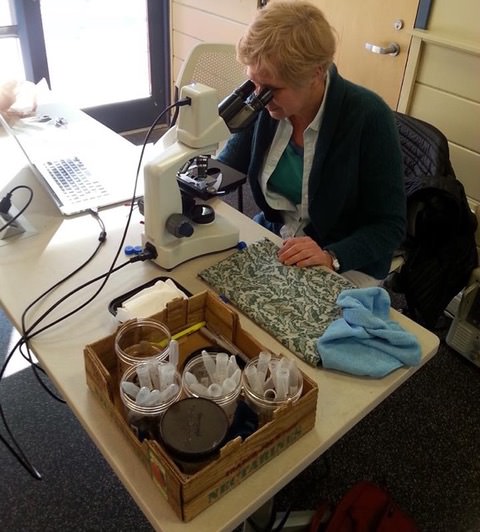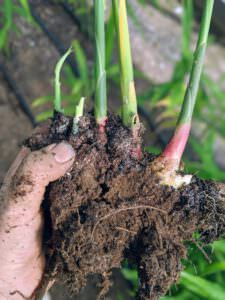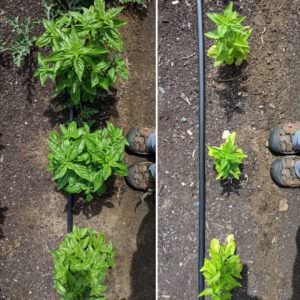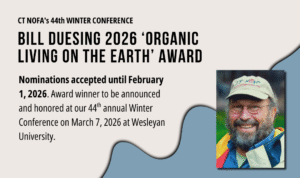Organic No-Till Farming Research Initiative: An Update

November 5, 2019
From NOFA’s technical consultant and “embedded” reporter, Monique Bosch
Under the Microscope at Assawaga Farm

We visited Assawaga Farm in late September to take a peak at how microbes are handling the ‘no-till’ environment up there. For the past 2
years Yoko and Alex have worked tirelessly on their 2 acre intensive farm to ‘push the envelope’ on no-till farming techniques. They are growing a wide assortment of vegetables, incorporating no-till with succession planting, cover crops and holistic farming practices to grow the healthiest food possible.
We took a look at their soil under the microscope and discovered excellent microbial life and soil structure. Below is a movie showing microscopy from one of their beds, growing a cover crop of field peas and oats in a bed that has not been tilled for the past 2 years…
Notice the amount of aggregates, large dark bundles of bacteria, resulting in excellent soil structure.
Yoko and Alex both felt that the microscopy gave them a much better understanding of what is going on inside their soil. They now have a

new set of eyes for soil, and have a greater appreciation for the life therein. Yoko explained how this will change the way they farm: “This will certainly make us think harder about how to treat the microbes, like keeping the soil covered at all times and have as much growing through the year as possible. We’re going to interplant around our main crops, to add diversity and cover as much soil as possible with living plants.”
No-till allows the soil to establish communities of fungal networks, aggregates of bacteria, and a constant stream of nutrient cycling between
plants and microbes. Alex talked about some of the challenges they face with no-till:
“We have a paperpot transplanter that does a great job planting seedlings. When we have residue of, tomatoes and peppers it’s difficult to get the planter through there. It’s much easier to have a newly tilled bed, but the rewards of leaving the roots to slowly decompose and add organic matter and food for the microbes gives us a much healthier next crop, so its worth the extra effort.”
We took another look at soil that was probably the least disturbed over the past two years, the garden bed growing ginger. Amazing how many fungal hyphae have developed in that short amount of time. See this for yourself below:
Fungal hyphae dominate this sample, and fungal dominant soil is preferred by ginger so it’s a perfect pairing of “right crop, right soil biology”.
Alex and Yoko shared with me a photo of one their success stories that came from no-till farming. These basil plants were planted at the same time. The right bed had been bare for about a year, the left bed had residue of celery with basil interplanted between the harvested crop:

The takeaway from our visit to Assawaga is that no-till is working in ways that the microscope can show:
- better soil structure
- more diverse life in the soil
- balance of fungi to bacteria
Our deepest thanks and appreciation for innovations in organic agriculture go to our partners at Assawaga Farm, as we at NOFA continue to explore ways to grow the healthiest food possible.
Recent Posts
Nominations for the 2026 Bill Duesing ‘Organic Living on the Earth’ Award Now Open
Each year, at our winter conference, CT NOFA confers the Bill Duesing Organic Living on the Earth award to a notable individual who or group which exemplifies the life mission of our founder, Bill Duesing, to improve and enrich our world through organic advocacy and practices.
Nominees for this award are suggested by our community – that’s you!
Read MoreRequest for Workshop Proposals for CT NOFA’s 2026 Winter Conference
The CT NOFA Winter Conference educational slate of workshops is made possible thanks to the interest and enthusiasm of our knowledgeable community members. Are you an expert on a topic that would be of interest to conference attendees? We’d love to hear from you.
Read More

